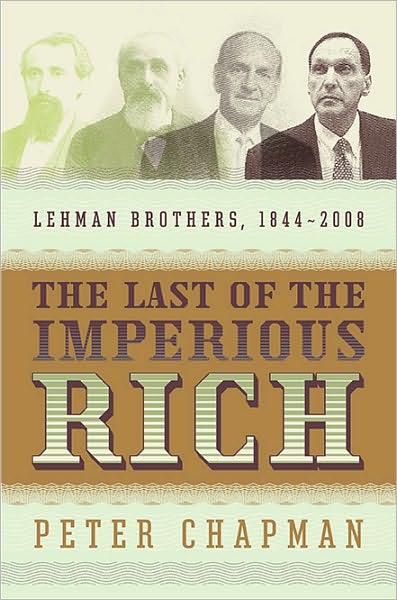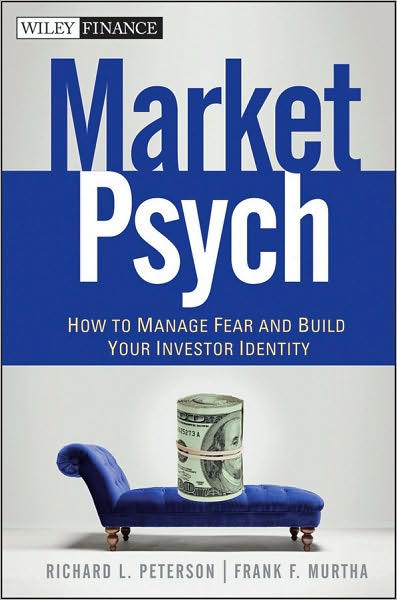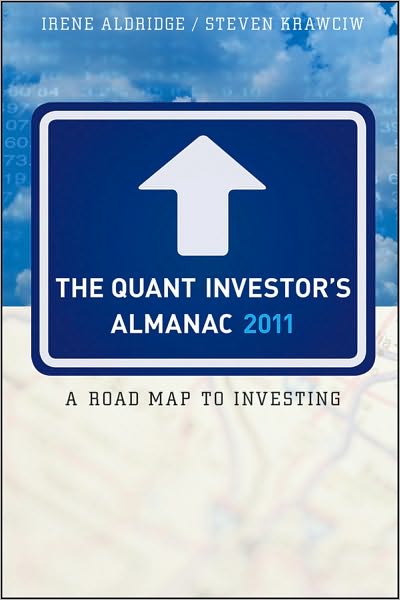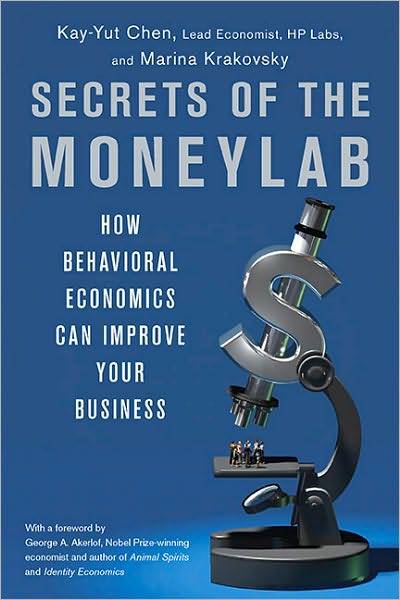A little bit ago, I published Twenty Questions for the Author of Risk and the Smart Investor.? Well, David X. Martin got back to me, and here are his thoughtful answers.? I will have more commentary on this as I write the book review, which I am doing immediately after posting this.
1. Q: Imagine you are talking to a bright 12-year old girl.? How would you explain to her why and how the financial crisis happened?
A: Think of what happens when you blow up a balloon. First it expands, but eventually, if you continue to add more and more air, it bursts. The air going into the balloon in the years leading up to the recent financial crisis was either ?borrowed? air, that is air that was bought on credit, or air that was highly leveraged. In other words, only a small part of the air was paid for, and the rest was borrowed. And when the balloon burst most of those that had borrowed air, or had lent air to others, were left with nothing.
2. Q: I was fascinated with the structure of your book, which I found tedious and hokey at first, but I grew to like it.? The way I see it, you introduce the topic through your experience, then explain the theory, then show neglect of it led to failure, and then you give us the stories of Max and Rob.? How did you hit upon this intriguing and novel way to write your book?
A: I first thought about the decision process, and described the continuous process of risk management in relatively simple steps?i.e., assessment (know where you are and what you do not know); rules of the game (know your risk appetite, transparency, diversification, checks and balances); decision-making (alternatives, responsibilities, reputation and time frame); and finally, reevaluation (monitor and learn from your mistakes ). My goal was not to write a “how to book” but rather to help readers build frameworks?to make good decisions, and it seemed it would be helpful, and entertaining, I hoped, to see the process in action through the fictional risk story.
3. Q: Why do you suppose so few people in risk management, and senior management at major financial firms, were unwilling to consider alternative views of the sustainability of the risks being taken as the risks got larger and larger relative to the equity of individual companies, the industry as a whole, and the economy as a whole?
A: People get lulled into seeing the world from a particular viewpoint, particularly if they have never been through the worse case scenario. I?ve been through many of them.
4. Q: As a risk manager, bosses would sometimes get frustrated with me when they wanted a simple answer to a complex question that had significant riskiness.?They did not like answers like, ?I don?t know, it could have six significant effects on our company.?? How can we convey the limits of our knowledge in a way that management can get the true uncertainty and riskiness of the environment that we work in?? How can we get management to consider scenarios that are reasonable, and could harm the company, but few others in similar situations are testing for?
A: Scenarios are a great way of thinking about the future in terms of the realm of possible outcomes. Thinking now about what you can/should be doing about those possible outcomes, is an excellent way to communicate risk potential to management. and engage their interest.
5. Q: In your experience, how good are the managements of financial companies at establishing their risk tolerances?? Better, how good are they at enforcing those limits, such that they are never exceeded?
A: Not very good. Businesses have strategies, strategies entail risks, and risks require capital. Very few companies take a holistic view of risk, capital, and strategy.
6. Q: How do you create a transparent risk culture in a firm?? How do you get resisters to go along, even if it is management that does not see the full importance of the concept?
A: Cultures do not change rapidly, they migrate. Transparency starts at the top and it will never spread through a company if management doesn?t recognize its importance, and communicate its importance to everyone in the firm.
7. Q: Are most cases where a person or a company fails to diversify intentional or unintentional?? Do we put too many eggs in one basket more out of ignorance or greed?
A: Diversification is a strategy that requires discipline. Take the case where you start with a diversified portfolio, and then one position takes off and acquires a disproportionate weight in your portfolio. Regardless whether the cause is ignorance (you did not monitor your portfolio?s balance) or greed (you rode the stock up ), the root problem is a lack of discipline.
8. Q: Why do you suppose that checks and balances for risk management are not built into the cultures of many financial companies?
A: When does a problem exist? Even if it has always been there, it comes into existence only when you recognize that it is a problem. Many times checks and balances do not exist because no one recognizes the risk/problem and therefore no one evaluates the checks, and balances, and controls needed to manage it.
9. Q: I have a friend Pat Lewis who developed a risk management system for Bear that could have prevented the failure of the firm, but it was ignored because it got in the way of profit center manager goals.? Was it the same for you at Citigroup when your ?Windows on Risk? got tossed out the window?
A: See pages 124-5 in my book. You never have to ask a portfolio manager what he or she thinks, just look at their portfolio. When I found out Citibank was no longer using Windows on Risk I sold my entire position that day. I recall it was at $51.75.
10. Q: Can culture and personal judgment work in risk management ever?? Take Berkshire Hathaway ? risk control is embedded in the characters of a few people, notably Warren Buffett and Charlie Munger.?If the culture is really, really good, and it comes from the top, can risk management work when it is seemingly informal?? (Remember, you don?t want to disappoint Warren.)
A: Risk management is all about culture and personal judgment. I remember pondering the question, “How high is up” at a Windows on Risk meeting at Citibank. The most senior management were sitting around the table. We came to our answer by asking the following question: What was the amount of loss we would be embarrassed to read about in the WSJ? That number, it turned out, was not very high, at least in the judgment of the people sitting around that table. News of that decision got around and had an impact on the company culture.
11. Q: How can you teach younger people in risk management intuition about risk that helps them have a healthy skepticism for the results of impressive complex modeling?
A: I co-wrote an article with Mike Powers from the London School of Economics titled “The End of Enterprise Risk Management.? Models are just one input; they are not a substitute for good judgment.
12. Q: Is it possible to do effective risk management in a financial firm if management is less than wholeheartedly committed to the goal?
A: I forgot where I first heard the expression, but it explains my feelings. “A fish starts to stink from its head first.?
13. Q: Aside from AIG, and other financial insurers, the insurance industry came through the crisis better than the banks because they focused on longer-term stress tests, and not on short-term measures like VAR.? Should the banking industry imitate the insurance industry, and focus on longer-term measures of risk, or continue to rely on VAR?
A: VaR is one measure. It has deficiencies. For example, the loss amounts predicted in the tails (that is, the extreme cases) are the best case scenarios, not the worse case. Institutionalizing this one measure, or relying on the measurement of “risk based capital,” has not worked.
14. Q: Seemingly the big complex banks did not analyze their liquidity risk, particularly with repo lines.? Why did they miss such an obvious area of risk management?
A: Liquidity is a very difficult concept. If you decide to sell your house in the suburbs at 2AM in the morning and put a “for sale” sign on your lawn at that hour, how quickly do you think it will sell. Liquidity, therefore, has to be thought of in terms of time. If, for instance, you see high average daily volume in a stock what is your real liquidity if the volume is the result of a nano second of high speed trading?.
15. Q: How much can risk management be shaped in financial firms by the compensation incentives that employees and managers receive?
I saw Walter Wriston six months before he died. He asked me how things were going. I said, nothing wrong with risk as long as you manage it. He smiled at me from ear to ear because those were his words, from his book Risk and other Four Letter Words. I think it is all about matching responsibility and authority, having the right culture, learning from errors, and promoting ethics. Incentives are on the list, but not at the top.
16. Q: I have often turned down shady deals in business, saying that you only get one reputation in this world.? How do you encourage an attitude like this in financial firms among staff?
A: If you go to sleep in s–t, you will most likely wake up covered with flies. I would start with an ethics committee, and make sure the most important people in the firm were on it.
17. Q: A lot of portfolio management and risk management is juggling different time frames.? Is there a good structure for balancing the demands of the short-, intermediate-, and long-terms?
A: A poor investment decision is still the same poor investment decision irrespective of the time frame. If you always try to do the right thing, time frames become less important.
I am not saying to forget about the timeframe, just that you shouldn?t let it lead you to a poor decision.
18. Q: Most developed country economic players assume that wars will have no impact on their portfolios.? Same for famine, plague, or environmental degradation.? What can you do to get investors to think about the broader risks that could materially harm their well-being?
A: Great question, but this one is outside my realm of expertise.
19. Q: Are Rob?s more common in the world than Max?s? That?s my experience; what do you think?
A: I purposely made Rob and Max pretty different in order to illustrate the principles in the book. I think we are all human and have a little bit of each.
20. Q: At the end of your book, one of your friends dies.? Did you mean to teach us that even if we manage our risks right, we still can?t overcome problems beyond our scope, or were you trying to say something else, like creating a system or family that can perform well after you die?
A: My first draft of the book began with what is now the concluding chapter?the one in which I discuss the courage necessary to face death. The developmental editor at McGraw-Hill, of course, didn?t like it up front, so I moved it to the end, where I wrote: ?It is at that moment, when death is imminent, and there is no possibility of escape, that courage comes into the picture.?
My view is that this mindset can be useful long before we consider our mortality, by helping us understand that there are realities that must be faced and not avoided. In investing as in life, long term success results from thoughtful, timely preparation. Or in other words, the best decisions are made before we are forced to make them. The best decisions are made before certain inevitabilities, so long on the horizon, appear unexpectedly in front of us, and we no longer have the time to consider the alternatives; when we can still calmly and intelligently assess our circumstances, consider alternatives, and make informed decisions, monitoring the results as we go.
This is what I refer to as ?de-risking,? and although the principles set out here are drawn from my experience as a risk manager at a number of leading investment firms, they apply not only to financial matters, but to almost every decision you?ll make over the course of your life.
So to my way of thinking, ?when lightning strikes–the processes that you have put in place make courage less necessary. Put another way, if you embrace risk by following an orderly process you will have constructed a framework that will help you make the right decisions










